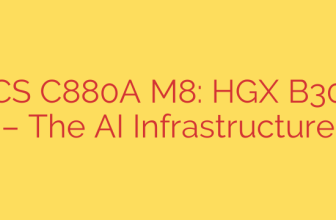
America’s Power Grid: A Ticking Time Bomb of Aging Infrastructure and Cyber Threats
The electric grid is the silent, humming backbone of modern society. It powers our homes, hospitals, financial systems, and communication networks. Yet, this critical infrastructure is facing a dual threat that puts our entire way of life at risk: its advanced age and its growing vulnerability to sophisticated cyberattacks. This isn’t a problem for the distant future; it’s a clear and present danger that demands immediate attention.
Understanding this challenge requires looking at two interconnected problems: the physical decay of the system and the digital doors we’ve opened in the name of progress.
The Physical Challenge: An Aging and Overburdened System
Much of the U.S. power grid was built in the mid-20th century, with many components operating well past their intended 50-year lifespan. Transformers, transmission lines, and substations are showing their age. This decades-old infrastructure was designed for a simpler time, not for the complex energy demands and extreme weather events of the 21st century.
The consequences of this decay are already visible:
- Increased Outages: Older equipment is more prone to failure, leading to more frequent and longer-lasting power outages.
- Vulnerability to Weather: Severe weather, from hurricanes to heatwaves, places immense strain on a system that lacks modern resilience.
- Physical Security Gaps: Many substations and critical components are physically exposed, making them targets for simple but effective sabotage.
Simply put, the physical foundation of our energy system is brittle. While utilities work to maintain it, they are often fighting an uphill battle against time and a lack of large-scale investment in fundamental modernization. Relying on outdated hardware is a gamble we can no longer afford to take.
The Digital Dilemma: Modernization Meets Malice
To improve efficiency and manage a more complex grid, utility companies have been integrating “smart” technology. This includes Industrial Control Systems (ICS), SCADA (Supervisory Control and Data Acquisition) systems, and a vast network of IoT sensors. These technologies allow for remote monitoring and control, which is essential for managing renewable energy sources and preventing blackouts.
However, this connectivity comes at a steep price. Every new sensor, every remote access point, and every piece of software creates a potential entry point for malicious actors. This modernization has created a vastly expanded digital attack surface, transforming a once-isolated system into one that is connected to the internet and, therefore, to its threats.
Cyber threats to the power grid are not theoretical. State-sponsored hackers, cybercriminals, and terrorist groups are actively targeting energy infrastructure worldwide. Their goals can range from espionage and data theft to outright disruption. A successful attack could:
- Trigger widespread blackouts by remotely shutting down power stations.
- Damage physical equipment by manipulating control systems, such as disabling cooling mechanisms on transformers.
- Sow chaos and distrust by disrupting power to critical services like hospitals, traffic control, and financial institutions.
The move from physically isolated operational technology (OT) to interconnected IT networks means that a phishing email sent to a utility employee could potentially be the first step in a catastrophic attack on the grid itself.
Building a Resilient Grid: Steps to Secure Our Power
Securing our nation’s power grid requires a multi-faceted approach that addresses both its physical and digital weaknesses. The challenge is immense, but the path forward is clear. It involves a coordinated effort from government agencies, utility companies, and security experts.
Here are the essential steps we must take:
Prioritize Strategic Modernization: We must invest heavily in upgrading the grid’s core components. This means replacing aging transformers and reinforcing transmission lines. Crucially, all new equipment must be designed with cybersecurity built-in from the ground up, not added as an afterthought.
Embrace a Zero-Trust Security Model: The old approach of trusting everything inside the network perimeter is obsolete. A zero-trust architecture assumes that threats can exist both inside and outside the network. It requires strict identity verification for every user and device trying to access any part of the grid’s control system.
Enhance Public-Private Information Sharing: The government and private utility operators must work in lockstep. Threat intelligence—information about new attack methods and active adversaries—needs to be shared in real-time so that all parties can mount a coordinated defense.
Invest in a Skilled Workforce: You cannot secure a complex system without highly trained people. We need to invest in training and retaining a new generation of cybersecurity professionals who understand the unique challenges of protecting operational technology and critical infrastructure.
Practice for a Crisis: Regular and rigorous security drills are non-negotiable. This includes penetration testing to find vulnerabilities, incident response simulations to prepare for an attack, and “black start” exercises to practice bringing the grid back online after a total shutdown. Proactive defense and rapid recovery planning are the keys to resilience.
The state of our power grid is a matter of national security. Securing it against the dual threats of age and cyberattack is one of the most significant challenges of our time. By investing in resilient infrastructure and adopting a forward-thinking, defense-in-depth cybersecurity strategy, we can ensure the lights stay on for generations to come.
Source: https://www.helpnetsecurity.com/2025/10/15/aging-critical-infrastructure-cybersecurity/








